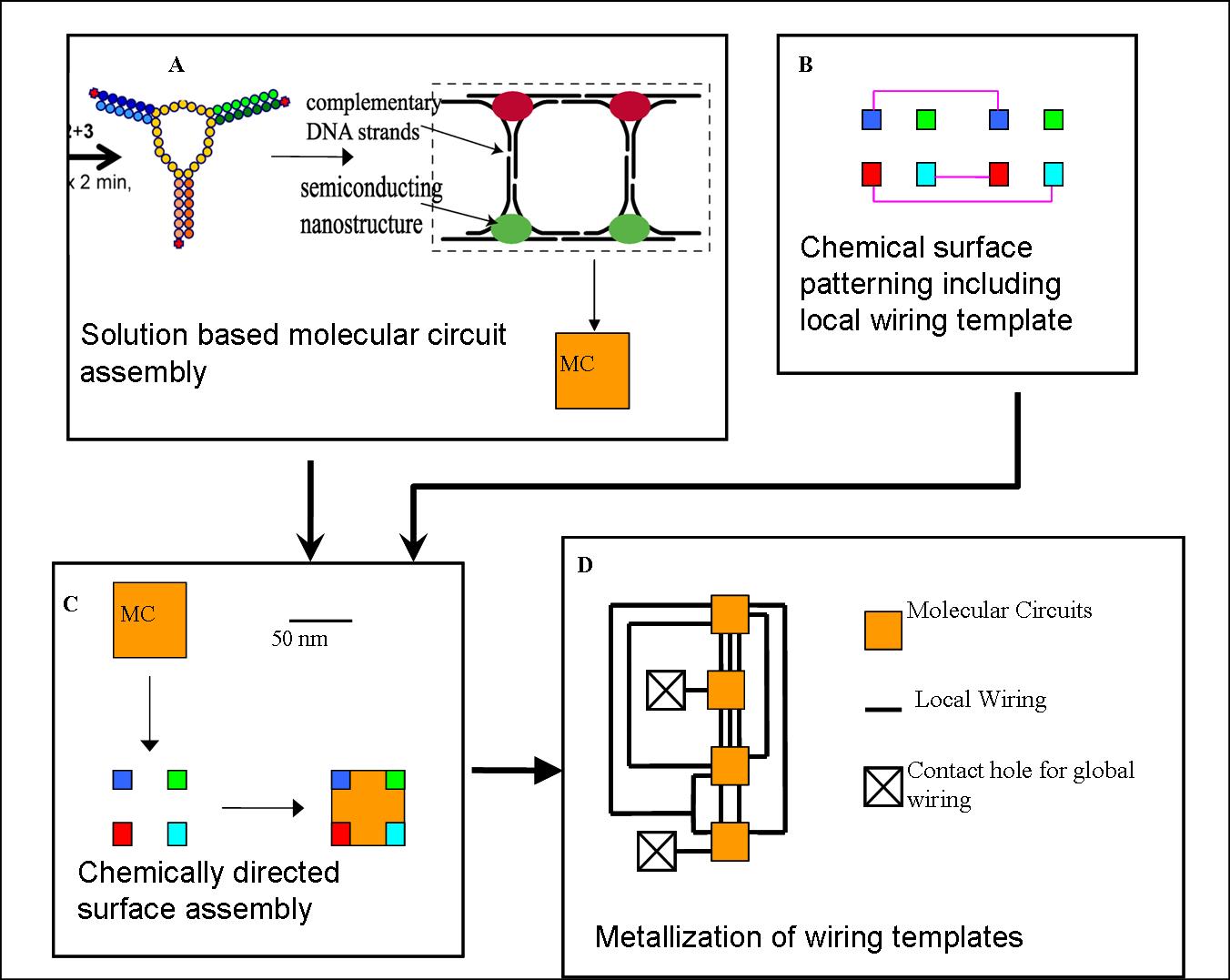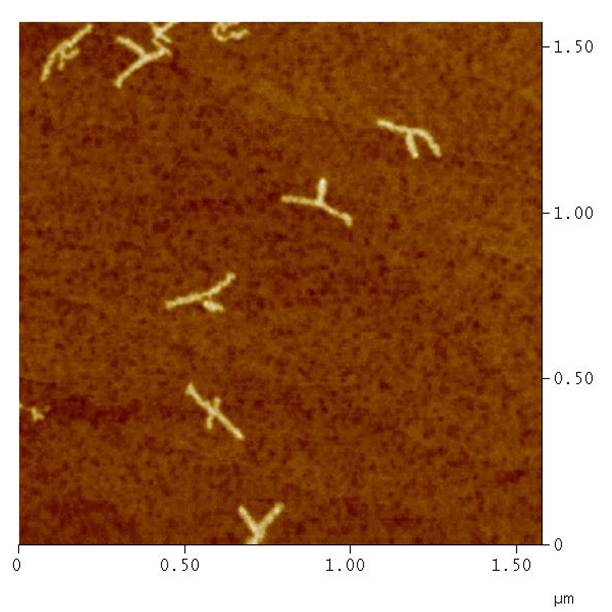Approach
Our approach to the formation of DNA-templated nanocircuits is summarized in the following diagram.



Nanofabrication efforts are underway at BYU by an interdisciplinary research group, ASCENT (ASsembled nanoCircuit Elements by Nucleic acid Templating). This group seeks to combine the complementary advantages of bottom-up self-assembly with top-down patterning, with the goal of providing a process for fabrication of nanoelectronic circuits. Efforts are focused on the development and refinement of four key technologies: (1) solution-phase assembly of structures and templates, (2) high-resolution chemical surface patterning, (3) high-precision metallization of molecular templates, and (4) chemically directed assembly and integration of nanostructures on surfaces. Molecular circuits are self-assembled in solution using customized DNA templates (“test-tube circuits”). DNA self-assembly is particularly powerful because of the large number of possible nucleic-acid sequences that enable highly selective bonding of DNA strands to each other and to other molecules. Chemical patterning will provide anchor points to attach and align the molecular circuits on the surface, as well as provide a means for local wiring to the anchored circuit, all with a resolution < 10 nm. Several patterning methods are being explored including polymer nanografting, chemomechanical patterning and self assembled layers. Metallization of both the exposed DNA and chemically templated lines is used to electrically connect active circuit elements to each other and to the larger-scale architecture. The net result will be DNA-templated molecular circuits that have been aligned and wired locally on an oxide surface. Interconnect technology similar to that used currently in the semiconductor industry can then be applied to create the larger global wiring needed for practical devices based on the molecular circuits under development. Go to top